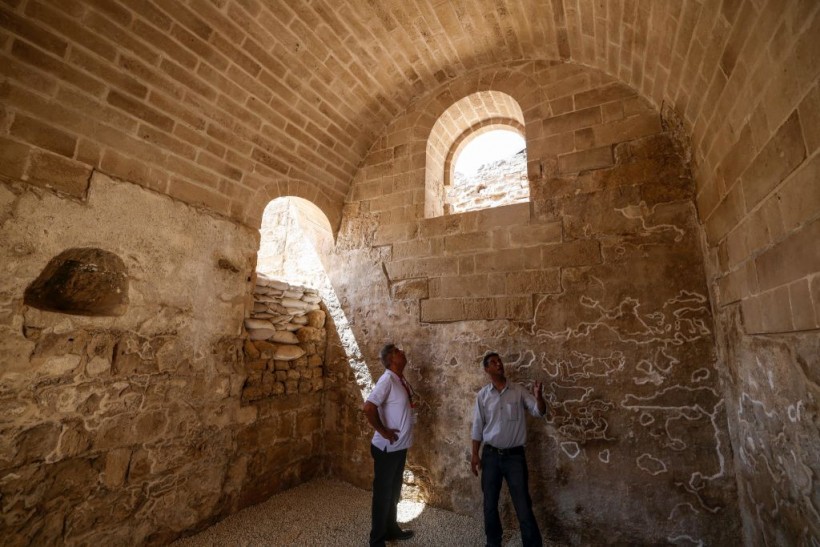A security guard posted at a construction site in Gaza Strip reportedly saw a bizarre piece of stone from the soil of the area. The guard, known as Ahmad, said that the piece looked like a part of a secret tunnel used by the Islamist group Hamas on the way to Israel.
Ancient Burial Site Under Construction Site in Gaza Strip

A picture shows a view of the archaeological site of Saint Hilarion in the center of the Gaza Strip on June 8, 2022. - While workers labored on a large construction site in the Gaza Strip, a security guard noticed a strange piece of stone sticking out of the earth. This find was made in January as part of a Roman necropolis dating from about 2,000 years ago and representative of the impoverished coastal strip's rich, if under-developed, archaeological treasures.
The region of the Gaza Strip is known as one of the major areas led by Hamas. Throughout these grounds, blood has been shed due to a series of wars. Because of these battles, the place also served as burial grounds for many people, thus preventing them from digging much of the area.
In a surprising turn, what Ahmad discovered this January was just a piece of a large necropolis believed to be constructed during the reign of the Roman empire. The catacombs dated back approximately 2,000 years ago.
The latest Gaza Strip discovery is one of the major archaeological finds unearthed in modern-day Palestine. Following the last war involving Hamas and Israel, the place became overly dilapidated, but thanks to the government of Egypt, the area is currently being rebuilt.
Ahmad saw the rock while the $500-million project commenced across this part of Jabaliya City. After his discovery, the guard immediately notified the Egyptian foremen to reach the local authorities and stop the operation full of experts and powerful equipment.
The government collaborated with Premiere Urgence Internationale and the French Biblical and Archaeological School of Jerusalem to identify what lies beneath the construction site.
A French archaeologist and lead of the Jabaliya scientific examination Rene Elter explained that the first permitted excavations revealed about 40 tombs dating back between the first and second centuries, right during the age of ancient Rome.
The Jabaliya Roman necropolis is expected to contain more than 40 tombs and might reach about 80 to 100 in the next operations, Elter continued.
What Archaeological Digs Mean for the Heritage of Israel and Palestine
The Gaza Strip excavation adds quite an intensity between Israel and Palestine, as they consider archaeological discoveries essential to prove their claims throughout the country.
But despite the Jewish state being able to discover numerous archaeological places and treasures across the country, anything that comes from the Jabalia sector is seemingly neglected. Moreover, many finds and sites were announced that were not included in the country's tourism projects.
Hamas has served as a palace for four separate wars and minor escalations over the past 15 years. But what lies beneath the land should be protected and preserved for future generations, says Premiere Urgence director Jihad Abu Hassan.
Because of the modernization, people refrain from telling authorities about archaeological places and pieces they discover due to the fear of disciplinary actions for the work stoppage. From the whopping 2.3 million population, Hassan's team helped 84 individuals to become archaeological technicians.
Training local people to become archeologists is one of the major solutions Hassan thinks will work best for both the preservation of the discoveries and the scarcity of jobs across the overcrowded land, PhysOrg reports.
RELATED ARTICLE: Historic Warship That Sank 340 Years Ago Contained Unopened Wine Bottles, Crest of Washington's Ancestors
Check out more news and information on Archaeology in Science Times.














